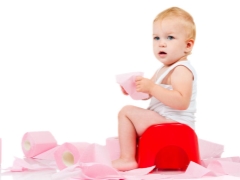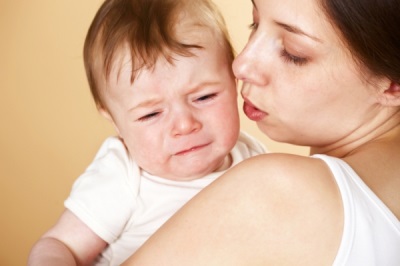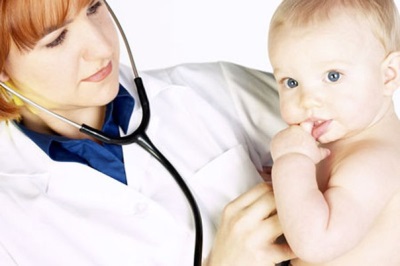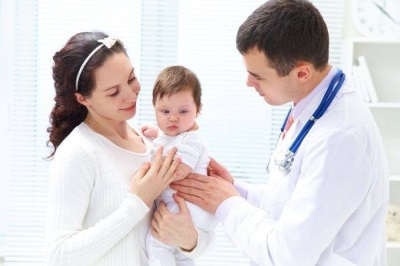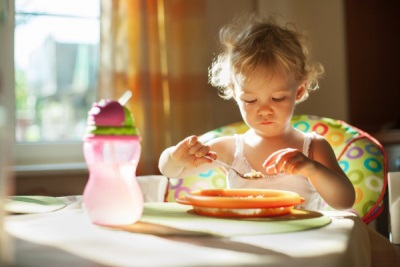Vomiting and diarrhea in a child
The simultaneous occurrence of vomiting in a child and loose stools is an adverse sign to the health of the baby. Why can such a combination of symptoms arise, what is its danger and how to help a child with vomiting and diarrhea?
How does it manifest itself?
Before vomiting, the child usually develops nausea, weakness, chills, pallor. The muscles of the stomach, diaphragm, and abdominal wall contract, causing the contents of the upper digestive tract to be expelled out through the mouth cavity (sometimes through the nose).
The appearance of diarrhea indicates the release of liquid feces, which may be watery and include various impurities. Also, the child has frequent urges to go to the toilet. The more often vomiting occurs and the more times a baby defecates, the faster the child weakens and the risk of dehydration increases.
Symptoms and possible causes, what to do?
The most common causes of the appearance in children of a combination of symptoms such as bouts of vomiting and liquefied stools are infection of the digestive tract and poisoning. Both vomiting and diarrhea act as defensive reactions of the child’s body against the ingestion of harmful bacteria, viruses, poor food, poisonous substances, drugs and other harmful compounds. Vomiting and loose stools are possible less often for other reasons.
Consider the possible causes of these symptoms in more detail:
Cause | As manifested in a child | What should parents do |
Intestinal infection | Vomiting that does not bring relief, fever, refusal of food, colic-like pain in the abdomen, loose stools with an unpleasant odor, discoloration and often with impurities. | Call an ambulance and, before the arrival of the doctor, collect part of the gag and feces for analysis, and also begin to replace the lost fluid and minerals with salt solutions. |
Poisoning | Repeated vomiting, chills, paleness, cold to the touch of the limbs, a liquefied stool of the usual color without impurities, severe spasmodic pain in the abdomen, refusal to eat, lethargy. After diarrhea and vomiting, the child's condition improves slightly. | Immediately call an ambulance, hold a gastric lavage and begin to give solutions for rehydration. |
Allergy to medicine or new food product | Occurrence of vomiting and loose stools after feeding or using medicine (there are no impurities in the secreted mass), skin changes (redness, itching, rash), sometimes difficulty breathing and swelling of the mucous membranes. | Call the doctor to clarify the diagnosis and appoint the appropriate treatment. |
Infectious diseases (ARVI, pharyngitis, pneumonia, otitis media, meningitis other) | Vomiting and diarrhea caused by intoxication, fever, other symptoms of an infectious disease. | Call the doctor to clarify the diagnosis and assign a suitable treatment for the underlying disease. |
Dysbacteriosis | Vomiting and frothy liquid stools several times a day, poor appetite, abdominal pain 1-2 hours after eating, rumbling in the abdomen, skin reactions (dryness, itching, rash). | Refer to the pediatrician, adjust the child's diet and follow the instructions of the doctor. |
Overfeeding or indigestion | Single (less often double) vomiting of undigested food after meals, single diarrhea (feces, undigested food). | Exclude the product that the child ate before the appearance of vomiting, as well as provide the baby with an optimal drinking regimen. |
Stress | Single vomiting and liquefied stools after a stressful situation or experiences. | Watch the child and try to eliminate the traumatic situations. |
Climate change | One-time vomiting and one-two-time diarrhea immediately after falling into unusual climatic conditions. | Ensure the child has a calm atmosphere after changing the climatic zone, avoid mental and physical stress, do not use unfamiliar products. |
When should I call a doctor?
Calling a doctor should be done in most cases of the appearance of a child and vomiting and diarrhea, since it is better to show the baby to a specialist than to miss the moment and belatedly treat a serious illness.
Urgently should seek medical assistance in such cases:
- Both vomiting and diarrhea in a child are very pronounced and repeated.
- The child has a very high temperature, there is severe pain in the abdomen.
- Blood is present in the stool and baby vomit.
- The baby refuses to drink or cannot drink saline due to constant vomiting.
- Before the onset of symptoms, the child ate mushrooms, canned food, spoiled food, or took some medicine.
- The child showed signs of dehydration.
Rules of first aid before the arrival of the doctor
- It is important to calm the child and rinse his mouth after each attack of vomiting. If you put the baby in bed, make sure that the head was slightly raised and turned to the side. A baby should be held upright.
- Without waiting for the arrival of the doctor, start unsoldering the child with saline solutions, which can be prepared from powdered pharmaceuticals or from salt, soda and sugar at home. To give such a solution to take turns with ordinary water or other drink. In order not to cause repeated episodes of vomiting, the solutions are given in small portions (a teaspoon for babies up to a year, a little more children for children over 12 months old) every 10 minutes.
- At elevated temperatures, a child can be given an antipyretic drug, to reduce the loss of water and minerals from sweat. Other medications are not recommended before a diagnosis.
- If parents are sure that vomiting and diarrhea are caused by poisoning, and the child is more than 3 years old, wash the baby's stomach immediately. To do this, you can use boiled water with activated carbon powder dissolved in it - take a tablespoon of coal per liter of liquid. If the use of potassium permanganate crystals is planned for an antiseptic solution, you should be as careful as possible and make sure that the substance is completely dissolved in water. After giving the child several glasses of liquid, the child is pressed with his fingers on the root of the tongue, thus causing vomiting. The procedure is carried out to obtain pure water. Next, the baby is given a drug from the group of sorbents and they begin to replenish the lost electrolytes with pharmaceuticals or solutions prepared at home.
What is the danger of the situation?
The main risk of vomiting, combined with diarrhea, is dehydration. Both symptoms cause severe loss of fluid and mineral salts, which leads to disruption of their balance in the tissues and deterioration of the body. The smaller the crumb, the more dangerous for his health such losses.

No less dangerous consequence may be the secretion of masses released during vomiting in the bronchi and lungs.
Symptoms of dehydration
Dangerous symptoms indicating dehydration are:
- Flaccidity and weakness, irritability.
- Dry mucous membranes and skin.
- No urination lately.
- Crying without tearing out.
- Westerning spring (in infants).
- Loss of body weight (in infants).
- Seizures are possible.
Treatment
The main focus of treatment is on rehydration, since the combination of vomiting with diarrhea is very high.
A baby with an intestinal infection and poisoning is often hospitalized (if the child is less than a year old, hospitalization in the infectious disease ward is always indicated). The doctor prescribes antibiotics, sorbents, drugs for parenteral rehydration, symptomatic agents (antispasmodic, anti-inflammatoryas well as probiotics.
Nutrition
Breast-fed babies with vomiting and diarrhea should more often be applied to their breasts or give the baby a familiar mixture. Lure at the time of the disease is canceled, and then introduced very carefully.
Older children usually do not give food during bouts of vomiting, especially since their appetite is reduced at this time.
When the child wants to eat, offer frayed semi-liquid dishes, such as rice or buckwheat porridge, mashed vegetables. You can also give white bread croutons, bananas, baked apples. Give your child food in small quantities, but more often.
Fresh vegetables, dairy products, fresh fruits, mushrooms, fatty and fried foods from the diet of the sick child should be excluded. Some time after vomiting and diarrhea, it is not necessary to load the digestive tract with meat and fish dishes. After 2-3 days, you can cook the baby fish or meat for a couple or as a souffle. Read more about this in the article about vomiting food.
How to understand that treatment helps?
After starting treatment, parents will be able to make sure that therapy really helps if:
- The child has improved health.
- Episodes of vomiting and loose stools became much less frequent, and then completely stopped.
- The child's mood increased and appetite appeared.
